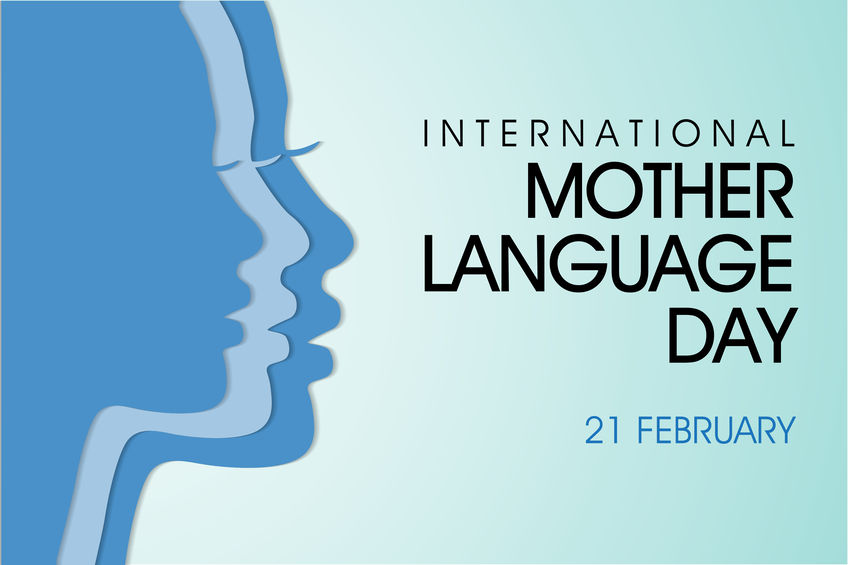A huge number of languages are spoken in the world today – some 6,500 (!) — and every one of them is special. Each is someone’s mother tongue.
On February 21, International Mother Language Day will be celebrating that fact. The term “mother language” is a calque, literally a word-for-word translation of common terms such as the French langue maternelle or the Spanish lengua maternal. It also evokes three English near-synonyms: mother tongue, native language, and first language.
Often the first speech a baby ever hears, a mother tongue is the language in which an infant was mothered (or “parented,” to use a more inclusive term) … comforted, sung to, and loved. The mother tongue/native language/first language is not consciously learned. It tends to bring with it an increased level of comfort and recognition, and even affects how its speakers learn other languages.
Another 1.9 million Canadian residents speak English or French as their predominant language, but regularly speak an immigrant language as well.
Mother Language and Immigration
Recent decades have seen a sharp increase in global population movement, motivated by factors that include economic opportunity, education, adventure, and escape from oppressive conditions or natural disasters. As a result, huge numbers of people find themselves in a society where the common language is very different from their mother tongue, which may be shared by just a handful of their acquaintances or family members.
This is demonstrably true in Canada, a land of immigrants; the latest census available reported that 4.7 million persons (14.2% of the population) most often speak a language other than the country’s two official tongues, English and French, in their own home.
And that’s only the tip of the tongue, so to speak. Another 1.9 million Canadian residents speak English or French as their predominant language, but regularly speak an immigrant language as well.
Reasons to Favour Mother Tongue
Wherever a person may live, there are many reasons to favour one’s mother tongue. The emotional aspect mentioned earlier ranks high, together with the desire for a cultural identity. In addition, a recent (or even a not-so-recent) immigrant or migrant may not have developed a comfortable level of fluency or ease in using the new language. Even when a person invests a great deal of effort in learning the majority language, there will always be instant recognition with items in your mother tongue.
Marketing in the Mother Language
“What does all this have to do with marketing?” you may ask. Plenty, as a matter of fact. Localize a campaign to reach a specific mother language group and you’ll increase your opportunities without a huge impact on your marketing budget.
First, the instant recognition factor. When, for example, a non-majority language speaker spots a targeted online advertisement localized into his or her mother tongue, it seems to jump out from the surrounding page. This type of ad has a very strong impact on and appeal to its audience. If you’re looking to grow your business (as the marketing gurus urge), localized advertising expands your appeal to a whole new potential clientele.
Second, the bottom line. Besides reaching a broader audience, localization will allow you to drop your costs for digital marketing. Bid on keywords in languages other than English and due to the decreased competition, your business will pay less.



![Connect with South Asian Canadians With These English [And Hindi!] Diwali Wishes](https://www.latmultilingual.com/wp-content/uploads/2023/11/Diwali-500x383.png)









